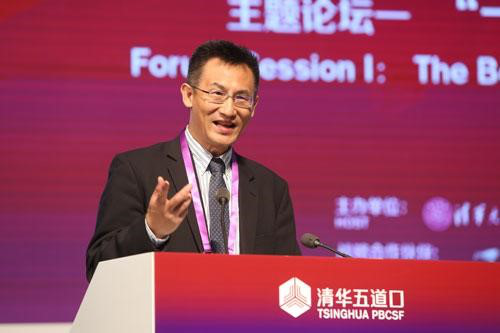时间:2017-06-12
【题目】Structural Adjustments and International Trade: Theory and Evidence from China
【时间】2017年6月14日14:00-15:30
【地点】天津大学25楼A座3层C教室
【主讲人】鞠建东 上海财经大学国际工商管理学院院长,清华大学五道口金融学院紫光金融学讲席教授
【主持人】张中祥 天津大学管理与经济学部经济学特聘教授,国家能源、环境和产业经济研究院院长

报告人简介
鞠建东,上海财经大学国际工商管理学院院长、经济学教授,清华大学五道口金融学院紫光金融学讲席教授,清华大学国际经济研究中心主任。获2016“浦山世界经济学优秀论文奖”。1988年获清华大学经济学硕士学位,1995年获美国宾夕法尼亚州立大学经济学博士学位。从1995年至2014年担任美国俄克拉荷马大学(University of Oklahoma) 经济系助理教授、副教授(终身聘任)、教授。曾任国际货币基金组织常驻学者,世界银行咨询顾问。鞠建东教授的研究领域集中在国际贸易、国际金融和产业组织。主要讲授课程:高级国际贸易。在American Economic Review、Journal of International Economics、Journal of Monetary Economics、American Economic Journal等国际一流学术杂志上发表论文多篇。
报告简介
We document the patterns of structural adjustments in Chinese manufacturing production and export: production became more capital intensive while export did not; firms' export participation increased in the labor intensive industries but declined in the capital intensive industries from 1999 to 2007. To explain these seemingly puzzling patterns, we embed heterogeneous firm (Melitz 2003) into the Dornbusch-Fischer-Samuelson model of both Ricardian and Heckscher-Ohlin (1977, 1980). We structurally estimate the model and find that capital deepening more than doubled the capital labor ratio of China, technology improved significantly but favored the labor intensive industries and trade liberalization reduced variable trade costs by about a quarter.Counterfactual simulations show that capital deepening made Chinese production capital intensive, but technology change that biases towards the labor intensive industries and trade liberalization provided a counterbalancing force. We also find that the Melitzian export selection mechanism shapes Ricardian comparative advantage extensively and contributes to about 2.1% of productivity growth during this period.